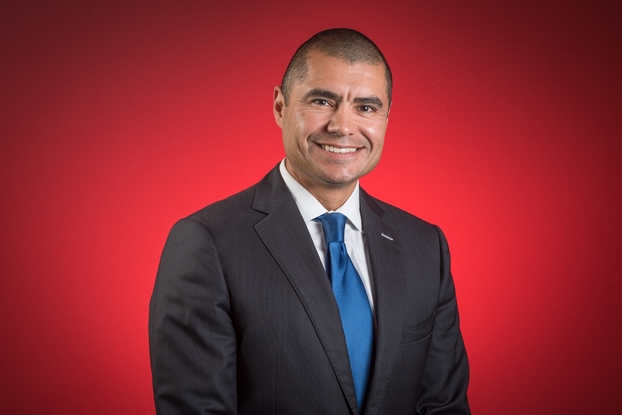Let's talk: How to have a candid conversation with children about mental health
- Category: General Health, Living Well, Mental Health, Keep Kids Well
- Posted on:
- Written By: Kristi Broussard, LMSW, Social Worker

More than 1 in 5 children struggle with a significant mental disorder. Over the last decade, we’ve seen a 60 percent increase in youth suicide rates across the nation. From 2018 to 2020, suicide was the third leading cause of death for adolescents ages 5 to14 and the second leading cause of death for young people ages 15 to 24. According to the Underlying Cause of Death database from the Centers for Disease Control and Prevention (CDC), the statistics strongly indicate children and adolescents are experiencing increased levels of anxiety and depression, and more than half of parents are worried about the mental state of their children.
So, the time for families to begin having real conversations about mental health is now. Primarily, it is critical for parents to first understand the issues that impact their child’s well-being. The more obvious, general indicators of stress for children are academic pressures (such as standardized testing and the competitive nature of collegiate expectations which often is a transference of worry from parent to child); peer/social expectations to fit into the more prevalent societal norms that exist within their own demographical scope, as well as bullying and family conflict.
A more deep-rooted issue that may take time to unravel is trauma, which can include emotional, physical and sexual abuse, trafficking, memories from accidents, witnessing a murder and/or other violent crime, and the passing of a loved one. Children are also facing internal and environmental struggles that go along with gender identity and sexual orientation, as well as depression and anxiety. Inter-family conflict, such as divorce and the general dynamics within these relationships with parents and siblings, can present challenges for them as well. Compounding this situation, parents may be struggling with unresolved emotional issues that negate appropriate modeling behavior for their children which can exacerbate the relationship.
In today’s world, children are inundated with information on the Internet – true or false – which can contribute to the inevitable rabbit holes children go down in terms of what they typically perceive as reality. This can create a distorted perception of the world around them, manifesting confusion and self-doubt. This includes social media and the pressure to have an online presence that reflects a perfect life, as well as the results of the emotional turmoil associated with peer comments and not getting enough “Likes” in posts. We are also seeing trends on platforms like TikTok where self-harm behaviors, such as cutting, are being promoted as appropriate ways to manage stress. Children typically look to peers for validation and acceptance, so online content created by other children and teens makes a direct impact, whether positive or negative.
Mental health: Why is it a hard topic for parents and children to talk about?
The topic of mental health, in general, is simply not a typically integrated aspect of conversation in families. In our day-to-day lives, families are busy managing multiple areas of their daily lives that include everything from work, finances, school, extracurricular activities, and the list goes on. We are caught up in the motion of living at a faster pace and fitting as much as we can into the day. Rhetorically speaking, who has time to think about mental health, let alone address it?
Depending on the foundation a family has laid for communication, this will play a role in how comfortable and open they are in sharing their emotions and feelings. If parents/caregivers and their children don’t already have an open, trusting dialogue when communicating, it will certainly be tougher to begin doing so when it’s time to address mental health issues. So, they may feel overwhelmed or unsure how to proceed.
When we think about stigmas related to mental health, we often see a negative association more typically attached to the parents’ belief system rather than the child’s. The social acceptance of seeking treatment for mental health problems is relatively new and still has a long way to go. But most adults are more likely to have grown up being told to manage their emotions internally – “don’t cry” or “be a big girl/boy” – and that can potentially be an integrated aspect of their parenting style. However, one of the many benefits of living in a more progressively minded culture in America than previous generations – as well as in the age of communicative technology – is that children have far greater exposure to the societal conversation on the importance of addressing mental health issues. The gap between the parents’ and the child’s perceptions of addressing mental health, can also create discord in the relationship in terms of children feeling uncomfortable about sharing their emotional struggles.
When children experience symptoms of anxiety or depression, they may not have a compass to navigate their feelings and emotions. Because of this, several things can happen:
- Children may worry they will be a burden for their parents/caregiver if they bring it up.
- They may feel isolated and misunderstood, believing their family won’t “get it.”
- Some children will avoid talking about it because they simply don’t want to appear less-than-perfect in the eyes of their parents. This can manifest into feelings of shame and embarrassment.
- They believe they are to blame for their anxiety, sadness, grief or pain, perpetuating internal isolation.
- Parents might blame themselves for their child’s mental health challenges. Parents who have made an active investment in their child’s life tend to hold the perspective that they are responsible for all the care and knowing that falls under that umbrella of love. And when issues come up with mental health, parents are quick to ask themselves, “Why didn’t I know about this? Why didn’t I see this coming?”
As a licensed social worker who works with many families, I frequently remind parents that we are all human, and we are learning as we go along. The unknowns that may come up with your child’s mental health are often a surprise and can create a rippling effect that affects the entire family dynamic.
Sometimes we have to take a step back and look at the big picture in an honest way and ask ourselves, “How do I fit into this? Has a past experience been a contributor? What may need to change for this situation to improve? Taking an honest and vulnerable approach in the way we communicate with children will help them feel more relaxed and willing to share in a similar way.
How to start a mental health dialogue with your child
Below are several tips for parents to consider when starting a mental health conversation with their kids.
Educate yourself on mental health issues and create a comfortable space for conversation. Parents who have an awareness of symptoms of mental health disorders, will feel better prepared before speaking with their child. Parents should establish a non-judgmental energetic space that feels safe and comfortable for the child in terms of dialogue. It’s also important for parents to know how to emotionally ground themselves and practice active listening. When a parent is calm, grounded, and has no distractions, they are more likely to communicate and listen in a clear, non-judgmental way.
Let the conversation flow naturally. Parents should resist the urge to push the conversation in a particular direction. Let it flow – don’t force the conversation. Try engaging with your child during a shared, low-key activity like driving home from school or taking a walk in the park. Conversations tend to flow more easily during these times because it feels non-confrontational to the child. When your child is ready to open up, make it a judge-free zone. Be open, understanding and empathetic.
Validate your child’s emotions. It’s important for parents to normalize their child’s feelings as much as possible, and let them know that what they are feeling is normal. This is validating for the child. It can also be helpful for the parent to acknowledge their own similar experiences, while keeping focus on what their child is struggling with. As well, parents can reflect statements back to the child to demonstrate they are listening and being empathetic (e.g., “I’m hearing that you are stressed about getting into a good college.”) Essentially, if you are open and honest about the topic of mental health, it’s more likely your child will realize it is nothing to be ashamed of and will be more comfortable approaching you with any problems.
Be an attentive listener. Let your child tell their story. There is no need to problem solve in the moment. Instead, ask gentle, open-ended questions without dispensing advice. When exploring and expressing their feelings, parents may guide their child in answering these questions verbally or on paper: What am I feeling? Why am I feeling this way? What clues does your body give you when you’re starting to become stressed or upset? How can I feel better? While listening to your child, it is also important for parents to understand how their child is coping with their mental health challenges. Do they practice healthy coping strategies? Where is your child presently finding joy in life, if at all? Do they have thoughts of self-harm? This can all be part of the conversation.
Reach out for professional guidance when needed. When parents need additional help to manage their child’s mental health struggles, they should contact their pediatrician or a child therapist for guidance. When therapy is recommended, we encourage families to look at it as a powerful source of support for the entire family, in conjunction with a positive approach to communication at home. Often times, the most communicative children shut down and resist talking. The best practice for parents and therapists to follow is to simply go with that resistance – back off and try again later. Letting the child know you are there for them when they are ready, offers reassurance.
The most important thing you can do is be available to your child when they are ready to talk. At a minimum, I would encourage you to engage in five minutes of real talk every day. Make time for meaningful connections, check on a loved one, discuss your struggles, ask for help. Children’s has started a High5 Challenge to encourage this daily real talk. You can join me in taking the #High5Challenge which you can learn more about at this link: https://youtu.be/wEI5h-kzHTg
Kristi Broussard is a licensed professional social worker affiliated with Children’s Hospital New Orleans. She also practices at a school-based health center for adolescents in partnership with LSU Adolescent Medicine.



